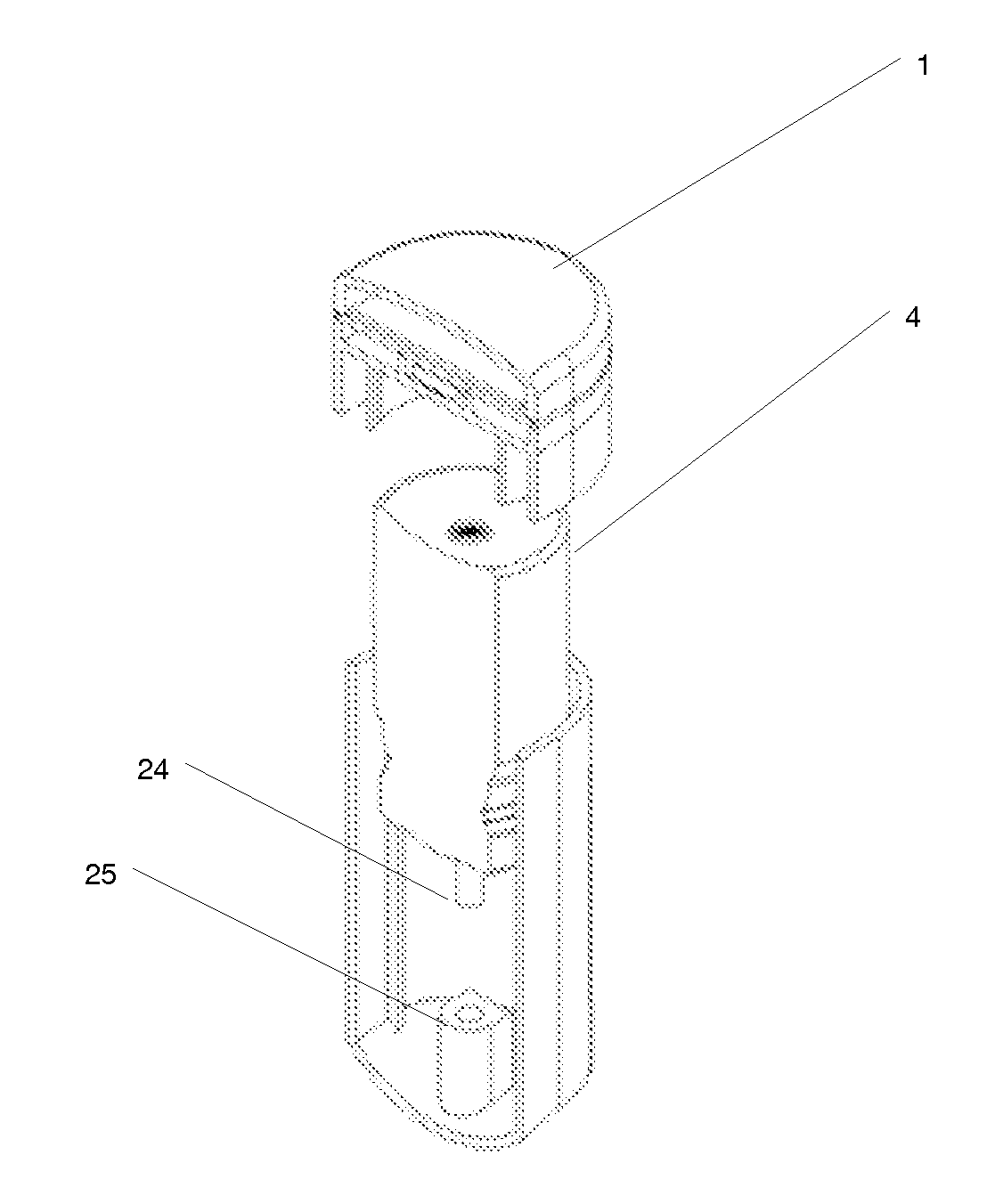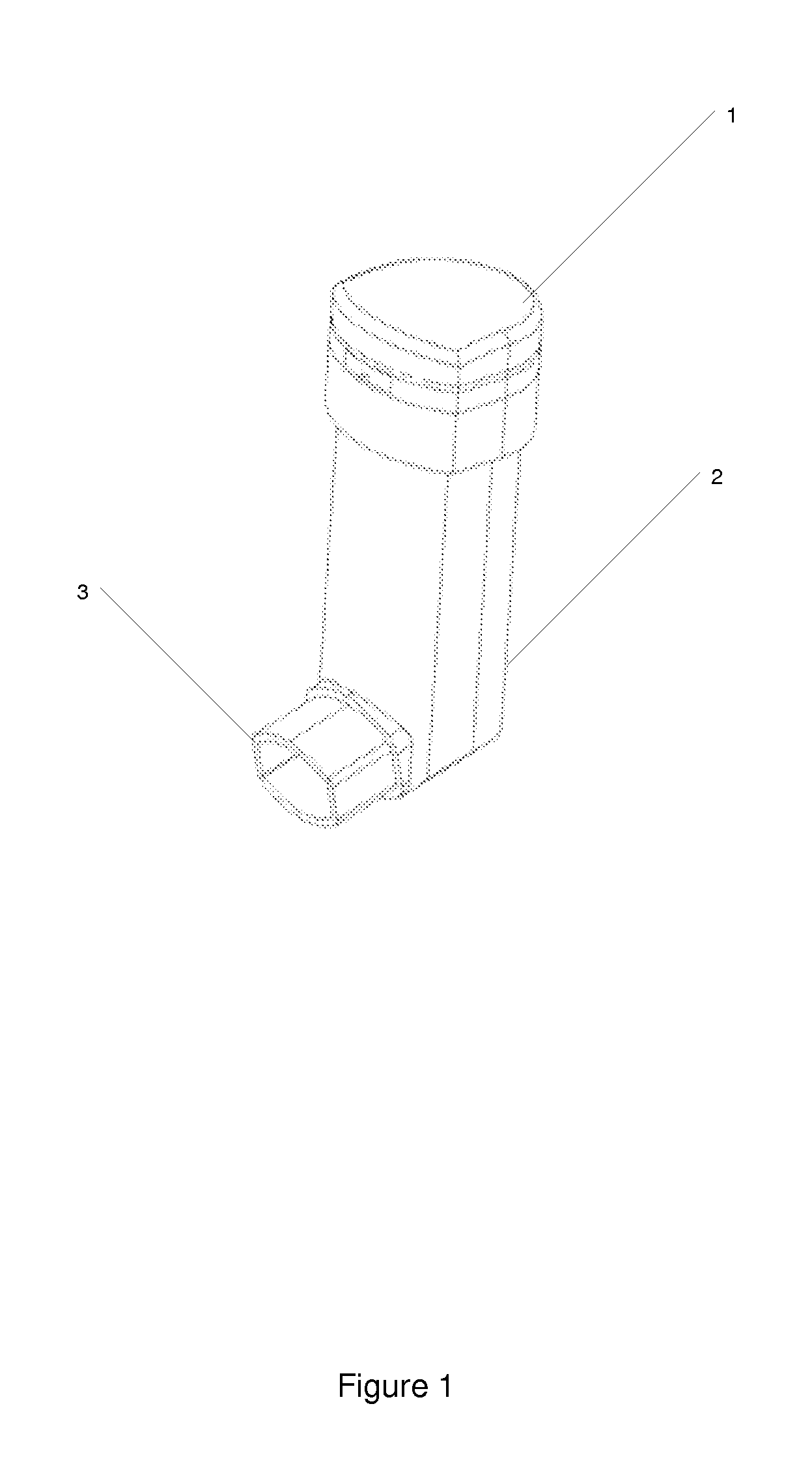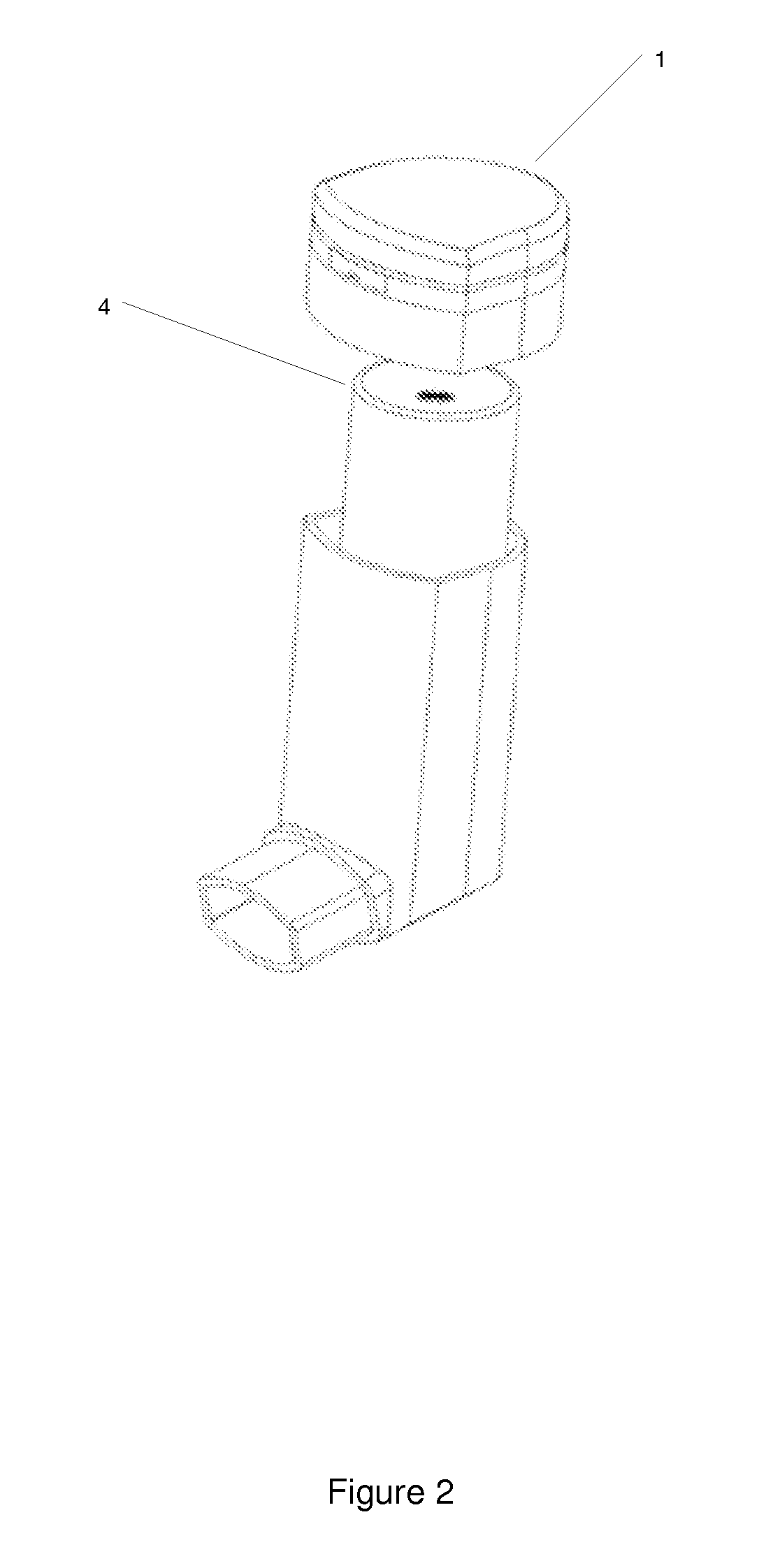Counter for a Drug Dispenser
- Summary
- Abstract
- Description
- Claims
- Application Information
AI Technical Summary
Benefits of technology
Problems solved by technology
Method used
Image
Examples
Embodiment Construction
[0039]With Reference to FIG. 1 this shows the fully assembled inhaler unit ready for use. The counter [1] is assembled onto the main housing [2] and in the orientation showing the position of the mouthpiece [3]. FIG. 3 shows the counter [1] removed off the canister [4] which is inserted into the main housing. FIG. 3 shows the section view of the full assembly and indicates the coupling of parts. The canister nozzle [24] is inserted into the main housing actuator [25]. Under normal operation the top part of the counter is depressed and the nozzle is depressed into the actuator until the valve inside the canister releases the drug. The drug then disperses through the mouth piece. In this embodiment the tri colour LED [26] is shown at the top of the counter and that would then light up into the magnified dome [27] to indicate successful drug release and indicate the remaining amount of drug in the canister. The current embodiment is based on a traffic light system such that if the numb...
PUM
 Login to View More
Login to View More Abstract
Description
Claims
Application Information
 Login to View More
Login to View More - R&D
- Intellectual Property
- Life Sciences
- Materials
- Tech Scout
- Unparalleled Data Quality
- Higher Quality Content
- 60% Fewer Hallucinations
Browse by: Latest US Patents, China's latest patents, Technical Efficacy Thesaurus, Application Domain, Technology Topic, Popular Technical Reports.
© 2025 PatSnap. All rights reserved.Legal|Privacy policy|Modern Slavery Act Transparency Statement|Sitemap|About US| Contact US: help@patsnap.com



